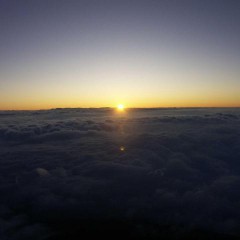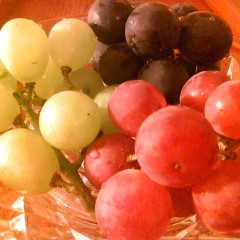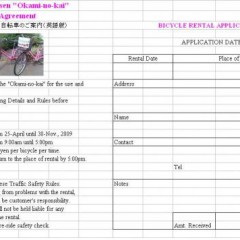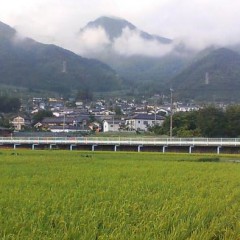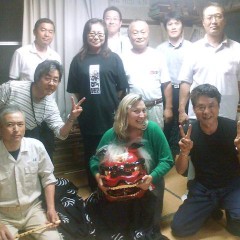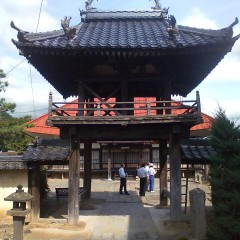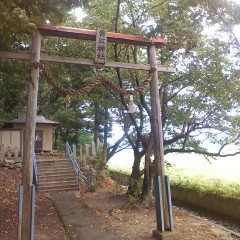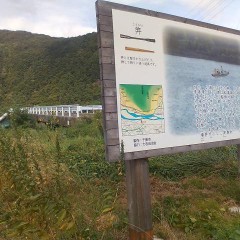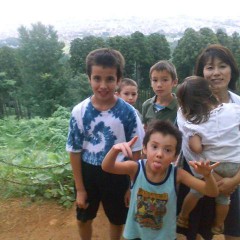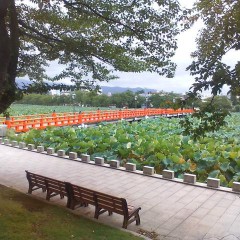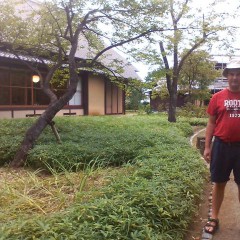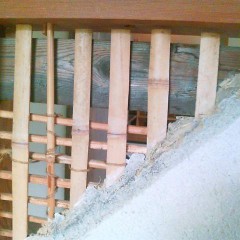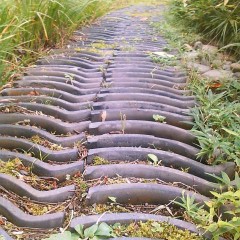
Grape Grower Ken-san
上山田のぶどうのシーズンは今日からスタートです。私には嬉しい事はそれぞれの時期は近場でそれぞれの果実の楽しみがあります。
6月は森の杏が出来上がる。
7月~8月は川中島の桃、
9月はぶどう(あちらこちらにあるけれど、亀清から車で約5分にもぶどう農園があります。)
10月は紅玉やはやいりんご、
11月はふじりんご。(りんご農園こそ、亀清から車で約5分に沢山あります。)
近いからこそ、農家の方とも話せます。最近の気候の影響はどうかとか、今年は雨が多かったから果実の出来上がりはどうとか、新しい種類や、猪が増えているかとか、さまざまな話が出来ます。農家の人を通して、地球と触れ合えるような感じです。
ところで、以前にも書いたけど、春に上山田で降った雹はやはり、今に出来上がっている果実にかなり損があります。
先日は上山田の新山地区の中島農園にお邪魔しました。Kenさんがぶどうもつがるのりんごも見せていただきました。見た目は雹の痕が見れたが、味はとっても美味しかった。ぶどう狩りをしてみませんか?通常の値段は750円/kgですが、雹ダメージの分は安くなるようです。詳細は:
中島農園
上山田の新山地区
Tel (090)4461-4091 Kenさん
営業時間: 午前9時から午後5時まで。(要予約)
入園料: 1000円(1kgのぶどうのお土産付き);又はぶどう狩りで750円/kg(雹ダメージのはもっと安く!)
ぶどうの種類: 巨峰(紫)、黄華(緑)、シナノスマイル(赤)
時期:9月3日から9月27日まで
沢山の農家がいますが、もう1箇所を紹介したい:
クラウン農園
上山田の十一面観音様向かい
Tel/Fax (026)275-0929; 携帯(090)9357-9565 飛田さん
入園料:500円(ぶどう一房お土産付き)
種類・時期: 巨峰(9月中旬~10月初旬)とシナノスマイル(9月下旬~10月中旬)
減農薬、有機栽培で育てられた
ぶどう狩り視ながら、信州の自然と触れ合ったらどうですか?
Kamiyamada's Grape Season started today. One thing I really like about living here is the parade of fruits we get to enjoy. Mori's apricots in June, Kawanakajima peaches in July and August, grapes in September, Kogyoku and other early apples in October, and fuji apples in November. And we are blessed with numerous grape and apple orchards within a 5 minute drive of Kamesei. That means we get to talk with the growers directly, and hear all about how this year's rain affected the harvest, new varieties, how the inoshishi wild boars are becoming more of a pest, and all kinds of things. Through talking with the growers, you get a sense of connection with the Earth.
As I mentioned before, Kamiyamada got hit by a hail storm in the early growing season. Yesterday I went to the Nakajima Orchard and saw firsthand how the tsugaru summer apples and the grapes were damaged by the hail. The damage is strictly cosmetic, and doesn't affect thet taste at all (which, by the way, is fantastic!).
Kamiyamda U-Pick Grape Info:
Nakajima Orchard
Arayama area
Tel (090)4461-4091 (Ken-san)
Hours: 9am - 5pm (Call ahead)
Varieties: Kohyo (purple), Ouka (green), Shinano Smile (red)
Season: 03-Sept. to 27-Sept.
Orchard Entrance Fee: 1000 yen (incl. 1kg grapes to take with you) OR U-Pick 750 yen per kg (less for hail damage grapes)
Crown Orchard
Tel/Fax (026)275-0929; cell (090)9357-9565 Fujita-san
Varieties/Season: Kohyo (mid-Sept. 'til early-Oct.), Shinano Smile (late Sept. 'til mid-Oct.)
Orchard Entrance Fee: 500 yen (incl. 1 bunch of grapes to take with you)
Note: Crown Orchard uses minimal pesticides and practices organic growing methods.
Note: English and German spoken
Come and get in touch with nature by picking grapes in Kamiyamada!

今年のぶどうは美味しそう!
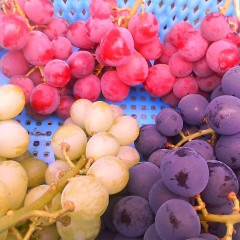
三種類 3 Varieties
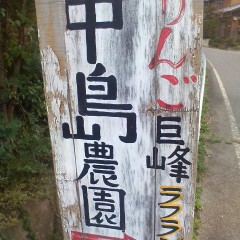
Look for the Nakajimas' sign
